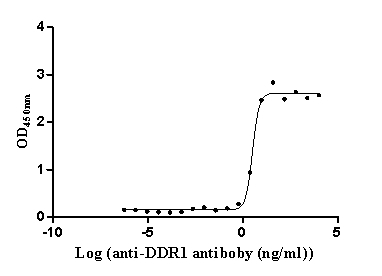CUSABIO employed a meticulous procedure to produce the DDR1 recombinant monoclonal antibody. Initially, B cells were isolated from the immunized animal's spleen, utilizing recombinant human DDR1 protein as the immunogen. Subsequently, RNA was extracted from the B cells and converted into cDNA through reverse transcription. Using the cDNA as a template, the gene encoding the DDR1 antibody was extended using a degenerate primer through PCR and inserted into a vector. The recombinant vector was then introduced into host cells through transfection, enabling efficient antibody expression. The DDR1 recombinant monoclonal antibodies were harvested from the cell culture supernatant and subjected to purification via affinity chromatography. Rigorous validation, including ELISA testing, was conducted to confirm this antibody's specific reactivity with human DDR1 protein, ensuring its reliability and suitability for a range of applications.




